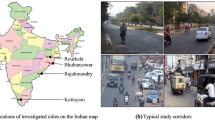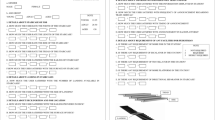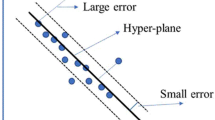Abstract
This study deals with the development of artificial intelligence (AI)-based bicycle level of service (BLOS) models for urban road segments carrying heterogeneous traffic. To accomplish this, the required data sets on the road geometric, traffic and built-environmental conditions are collected from 84 road segments located in various parts of four Indian cities. The satisfaction levels of bicyclists at each site are also assessed using a Likert scale of 1–6 (excellent–worst). Subsequently, three promising AI techniques namely, Multivariate adaptive regression splines (MARS), Genetic programming (GP) and Bayesian regularization neural network (BRNN) are utilized to develop the BLOS models. All models are trained and tested with eight significant attributes of the road segments. Among all models, the MARS-based one has shown the best prediction performance in the present context with a coefficient of determination (R2) value of 0.92 with averaged observations. On the other hand, GP has produced the simplest (regression-like) but reliable model, which is the most favourable for field applications. The relative importance of input variables has concluded that the outermost lane width, traffic volume, on-street parking activities and pavement condition index are by far the most important variables in the present context. Hence, these attributes should be largely prioritized in the planning process to enhance the perceived BLOS effortlessly.




Similar content being viewed by others
References
Davis, J.: Bicycle safety evaluation. Auburn University, City of Chattanooga, and Chattanooga-Hamilton County Regional Planning Commission, Chattanooga, TN (1987)
Epperson, B.: Evaluating suitability of roadways for bicycle use: toward a cycling level-of-service standard. Transportation Research Record, No. 1438, pp. 9–16 (1994)
Landis, B.W.: Bicycle interaction hazard score: A theoretical model. Transportation Research Record, No. 1438, 3–8 (1994)
Sorton, A., Walsh, T.: Bicycle stress level as a tool to evaluate urban and suburban bicycle compatibility. Transportation Research Record, No. 1438, pp. 17-24 (1994)
Davis, J.: Bicycle test route evaluation for urban road conditions. Transportation Congress: Civil Engineers-Key to the World Infrastructure. Proceeding of the Transportation Congress, Volumes 1 and 2: Civil engineers—key to the world’s infrastructure, American Society of Civil Engineers (ASCE), San Diego, pp. 1063–1076 (1995)
Landis, B.W., Vattikuti, V.R., Brannick, M.T.: Real-time human perceptions: toward a bicycle level of service. Transportation Research Record, No. 1578, 119–126 (1997). https://doi.org/10.3141/1578-15
Harkey, D.L., Reinfurt, D.W., Knuiman, M., Stewart, J.R., Sorton, A.: Development of the bicycle compatibility index: a level of service concept. Transportation Research Record, No. 1636, 13–20 (1998). https://doi.org/10.3141/1636-03
Jensen, S.U.: Pedestrian and bicycle level of service on roadway segments. Transportation Research Record, No. 2031, pp. 43–51 (2007) https://doi.org/10.3141/2031-06
Transportation Research Board (TRB): Highway Capacity Manual, p. 1134. Transportation Research Board, Washington, D.C. (2000)
Transportation Research Board (TRB): Highway Capacity Manual, p. 1650. Transportation Research Board, Washington, D.C. (2010)
Kang, K., Lee, K.: Development of a bicycle level of service model from the user’s perspective. KSCE J. Civ. Eng. 16(6), 1032–1039 (2012). https://doi.org/10.1007/s12205-012-1146-z
Beura, S.K., Chellapilla, H., Bhuyan, P.K.: Urban road segment level of service based on bicycle users’ perception under mixed traffic conditions. J. Mod. Transp. 25(2), 90–105 (2017). https://doi.org/10.1007/s40534-017-0127-9
Put, R., Xu, Q., Massart, D., Heyden, Y.: Multivariate adaptive regression splines (MARS) in chromatographic quantitative structure-retention relationship studies. J. Chromatogr. A 1055, 11–19 (2004). https://doi.org/10.1016/j.chroma.2004.07.112
Koza, J.R.: Genetic Programming: On the programming of computers by means of natural selection. MIT Press, Cambridge (1992)
Poli, R., Langdon, W., McPhee, N.: A field guide to genetic programming. Lulu Enterprises, UK Ltd, London (2008)
Demuth, H., Beale, M.: Neural Network Toolbox. The Math Works Inc., USA (2000)
Bartlett, P.L.: The sample complexity of pattern classification with neural networks; the size of the weights is more important than the size of network. IEEE Trans. Inf. Theory 44(2), 525–536 (1998). https://doi.org/10.1109/18.661502
Friedman, J.: Multivariate adaptive regression splines. Ann.Stat. 19, 1–141 (1991)
Goh, A.T.C.: Back-propagation neural networks for modeling complex systems. Artif. Intell. Eng. 9(3), 143–151 (1995)
IRC: Guidelines for capacity of urban roads in plain areas. Indian Road Congress-106, New Delhi (1990)
Gandomi, A.H., Yun, G.J., Alavi, A.H.: An evolutionary approach for modeling of shear strength of RC deep beams. Mater. Struct. 46, 2109–2119 (2013). https://doi.org/10.1617/s11527-013-0039-z
Author information
Authors and Affiliations
Corresponding author
Ethics declarations
Declarations of Interest
None.
Additional information
Publisher’s Note
Springer Nature remains neutral with regard to jurisdictional claims in published maps and institutional affiliations.
Rights and permissions
About this article
Cite this article
Beura, S.K., Bhuyan, P.K. Development of Artificial Intelligence-based Bicycle Level of Service Models for Urban Street Segments. Int. J. ITS Res. 20, 142–156 (2022). https://doi.org/10.1007/s13177-021-00280-3
Received:
Revised:
Accepted:
Published:
Issue Date:
DOI: https://doi.org/10.1007/s13177-021-00280-3




